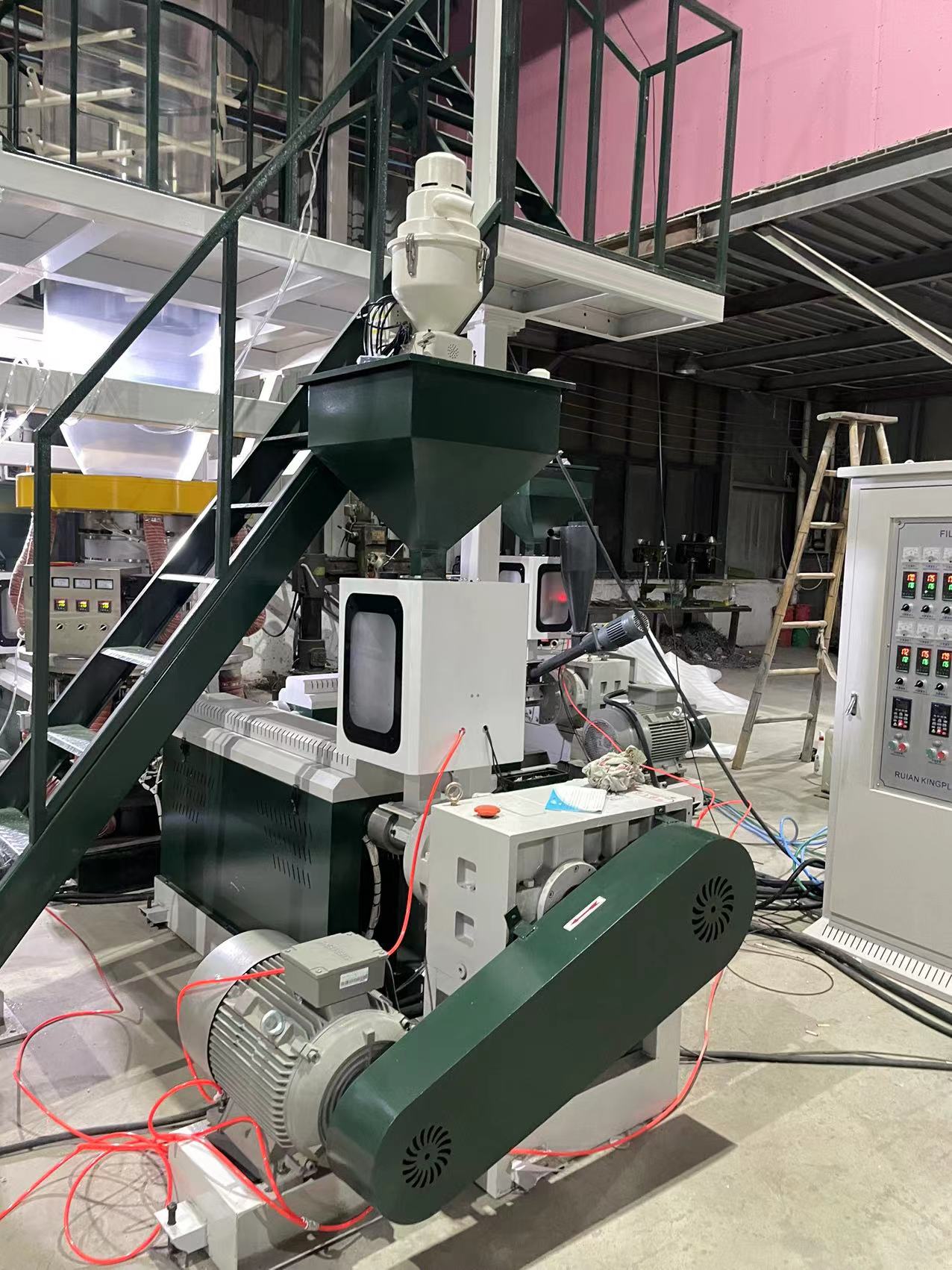In the context of a film blowing machine, a gravimetric system is used for precise control and measurement of the amount of material being extruded to produce the film. It is a feeding system that accurately measures the weight of the material and adjusts the feed rate accordingly to maintain a consistent output.
The gravimetric system typically consists of a hopper, a load cell, and a control unit. The material, typically plastic pellets, is placed in the hopper, which is equipped with a continuous or intermittent feeding mechanism. The load cell, which is a sensor, is located underneath the hopper and measures the weight of the material in real-time.
The load cell sends this weight information to the control unit, which compares it to the desired setpoint weight. If there is a deviation, the control unit adjusts the feeding mechanism to increase or decrease the material flow rate, ensuring that the desired weight is maintained. This gravimetric control system offers several advantages in film blowing applications. Firstly, it provides precise control over the material flow, allowing for consistent film thickness and quality. Secondly, it helps to prevent material waste as the system can accurately measure and control the amount of material being used. Finally, it allows for easier and faster setup and changeover times, as the system can automatically adjust the feed rate based on the desired output for different film types or sizes.
Overall, implementing a gravimetric system in a film blowing machine helps to improve efficiency, reduce material costs, and ensure consistent and high-quality film production.


















